male gaze
description: depiction of girls and women as sexual objects for the pleasure of a male, heterosexual viewer
41 results

Women and Other Monsters: Building a New Mythology
by
Jess Zimmerman
Published 9 Mar 2021
All this means that historically, even our heroines—women who are, in all other ways, outside the norm—are subject to the demands of physical perfection. Take Gal Gadot in the 2017 film Wonder Woman. A powerful and principled female fighter raised on an isolated island of powerful, principled female fighters, an island that values strength and dedication and has never so much as encountered the male gaze—and yet she and every one of her fellow Amazons is willowy, symmetrical, high-cheekboned, youthful, and hairless from the neck down. We barely know how to envision a female hero who isn’t. We only recently figured out how to envision one who’s wearing clothes. If a woman is not beautiful, she must be invisible; if a woman is extraordinary, therefore, she must be beautiful.
…
The issue isn’t anything specific to the genitals themselves, but inherent to genitalia as a class: they have a smell and taste, they sport hair, they are associated with excretion. The genitals are a distillation of everything earthy and mammalian about bodies, everything that makes women into mammals instead of objects or angels, slapped down right where the ultimate prize is supposed to be. The male-gaze establishment sees sex with women as something to be won—the primary purpose of women, and one of the primary goals of men. And yet, standing in the way of this goal is the inconveniently corporeal nature of the bodies one is presumably having sex with. The disgust and horror stem not from the bodies per se but from the gulf between reality and fantasy.
…
This is what I’m supposed to get from that story: “But to the girdle do the gods inherit; Beneath is all the fiend’s.” Nobody really likes to think about how we all ride around in vehicles of meat that are rotting underneath us for most of our lives, but for a straight man looking at a woman—or anyway, for the Male Gaze looking at a woman—that fact feels like not just a downer but a betrayal. Where are the poreless, depilated angels they were promised? The human body is a disappointment to us all, but for men it is rarely presented as more than it is: an unruly sack of fluids and stench. The images of women, at least women found desirable, have long been divorced from these realities.
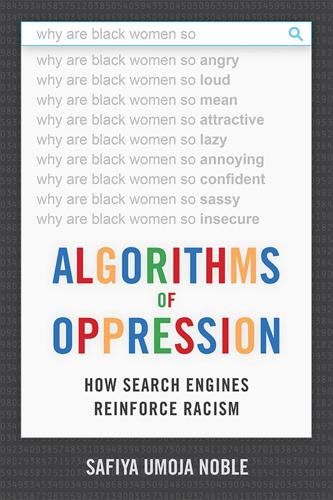
Algorithms of Oppression: How Search Engines Reinforce Racism
by
Safiya Umoja Noble
Published 8 Jan 2018
The research of Don Heider, the dean of Loyola University Chicago’s School of Communication, and Dustin Harp, an assistant professor in the Department of Communication at the University of Texas, Arlington, shows that even though women constitute just slightly over half of Internet users, women’s voices and perspectives are not as loud and do not have as much impact online as those of men. Their work demonstrates how some users of the Internet have more agency and can dominate the web, despite the utopian and optimistic view of the web as a socially equalizing and democratic force.81 Recent research on the male gaze and pornography on the web argue that the Internet is a communications environment that privileges the male, pornographic gaze and marginalizes women as objects.82 As with other forms of pornographic representations, pornography both structures and reinforces the domination of women, and the images of women in advertising and art are often “constructed for viewing by a male subject,”83 reminiscent of the journalist and producer John Berger’s canonical work Ways of Seeing, which describes this objectification in this way: “Women are depicted in a quite different way from men—not because the feminine is different from the masculine—but because the ‘ideal’ spectator is always assumed to be male and the image of the woman is designed to flatter him.”84 The previous articulations of the male gaze continue to apply to other forms of advertising and media—particularly on the Internet—and the pornification of women on the web is an expression of racist and sexist hierarchies.
…
Their work demonstrates how some users of the Internet have more agency and can dominate the web, despite the utopian and optimistic view of the web as a socially equalizing and democratic force.81 Recent research on the male gaze and pornography on the web argue that the Internet is a communications environment that privileges the male, pornographic gaze and marginalizes women as objects.82 As with other forms of pornographic representations, pornography both structures and reinforces the domination of women, and the images of women in advertising and art are often “constructed for viewing by a male subject,”83 reminiscent of the journalist and producer John Berger’s canonical work Ways of Seeing, which describes this objectification in this way: “Women are depicted in a quite different way from men—not because the feminine is different from the masculine—but because the ‘ideal’ spectator is always assumed to be male and the image of the woman is designed to flatter him.”84 The previous articulations of the male gaze continue to apply to other forms of advertising and media—particularly on the Internet—and the pornification of women on the web is an expression of racist and sexist hierarchies. When these images are present, White women are the norm, and Black women are overrepresented, while Latinas are underrepresented.85 Tracey A.
…
Structural inequalities of society are being reproduced on the Internet, and the quest for a race-, gender-, and class-less cyberspace could only “perpetuate and reinforce current systems of domination.”87 More than fifteen years later, the present research corroborates these concerns. Women, particularly of color, are represented in search queries against the backdrop of a White male gaze that functions as the dominant paradigm on the Internet in the United States. The Black studies and critical Whiteness scholar George Lipsitz, of the University of California, Santa Barbara, highlights the “possessive investment in Whiteness” and the ways that the American construction of Whiteness is more “nonracial” or null.

Flash Count Diary: Menopause and the Vindication of Natural Life
by
Darcey Steinke
Published 17 Jun 2019
And while he may break down a few doors, he also acts with an inner integrity. “The woman who lashes out at menopause,” Greer writes, “has found the breach in her self-discipline through which she may be able, finally, to escape to liberty.” Freedom is on the horizon—freedom from child care and domestic duties, from trying to be beautiful, from the leering male gaze, from derailing sexual desires. First, however, my body must evolve. As a woman, I should be used to the seismic changes of flesh and blood. During puberty my skin got greasy, my breasts popped out, and I started, to my astonishment, growing black hairs under my arms and between my legs. During the last month of my pregnancy, the creature inside me often jammed a toe into my stomach and dragged that toe across the curved plane of my protruding belly.
…
“The aging woman,” Simone de Beauvoir writes, “well knows that if she ceases to be an erotic object, it is not only because her flesh no longer has fresh bounties for men; it is also because her past, her experience, make her, willy-nilly, a person; she has struggled, loved, willed, suffered, enjoyed, on her own account. This independence is intimidating.” * * * I can embrace my body’s transition, realize there is nothing tragic in using a little lube, feel that an earlier fragmentation created by cycling and the male gaze is finally mending. I can sense, as I sometimes do, that I am back where I was before menstruation—a fierce girl ready to take on the world. The thing I can’t change is the sexual disgust the greater culture aims at older women. Sooner or later I will become a body not only invisible but also despised.

Your Computer Is on Fire
by
Thomas S. Mullaney
,
Benjamin Peters
,
Mar Hicks
and
Kavita Philip
Published 9 Mar 2021
Notes 1. Davey Alba, Kate Conger, and Raymond Zhong, “Twitter Adds Warnings to Trump and White House Tweets,” New York Times (May 29, 2020), https://www.nytimes.com/2020/05/29/technology/trump-twitter-minneapolis-george-floyd.html. 2. Kate Losse, “The Male Gazed,” Model View Culture (January 2014), https://modelviewculture.com/pieces/the-male-gazed. 3. See, for instance, the way that Black women understood and warned about the dynamics of online trolling and abuse far sooner than white women, yet got far less credit for sounding the alarm. Rachelle Hampton, “The Black Feminists Who Saw the Alt-Right Threat Coming,” Slate (April 23, 2019), https://slate.com/technology/2019/04/black-feminists-alt-right-twitter-gamergate.html. 4.
…
See Alexia Fernández Campbell, “Google Employees Say the Company Is Punishing Them for Their Activism,” Vox (April 23, 2019), https://www.vox.com/2019/4/23/18512542/google-employee-walkout-organizers-claim-retaliation; Julia Carrie Wong, “‘I’ve Paid a Huge Personal Cost’: Google Walkout Organizer Resigns over Alleged Retaliation,” Guardian (June 7, 2019), https://www.theguardian.com/technology/2019/jun/07/google-walkout-organizer-claire-stapleton-resigns; Nitasha Tiku, “Most of the Google Walkout Organizers Have Left the Company,” Wired (July 16, 2019), https://www.wired.com/story/most-google-walkout-organizers-left-company/. 4. Katharine A. Kaplan, “Facemash Creator Survives Ad Board,” Harvard Crimson (November 19, 2003), https://www.thecrimson.com/article/2003/11/19/facemash-creator-survives-ad-board-the/; Kate Losse, “The Male Gazed: Surveillance, Power, and Gender,” Model View Culture (January 13, 2014), https://modelviewculture.com/pieces/the-male-gazed. 5. On the last point, see Alexandra Stevenson, “Facebook Admits It Was Used to Incite Violence in Myanmar,” New York Times (November 6, 2018), https://www.nytimes.com/2018/11/06/technology/myanmar-facebook.html. For a general overview, see Siva Vaidhyanathan, Antisocial Media: How Facebook Disconnects Us and Undermines Democracy (Oxford: Oxford University Press, 2018). 6.

The Equality Machine: Harnessing Digital Technology for a Brighter, More Inclusive Future
by
Orly Lobel
Published 17 Oct 2022
As legal scholar Jeannie Suk contends, nowhere in the facts of the case is such a lady sitting in her sauna; rather, Scalia was evoking “the privacy interest of the man [of the house—his castle, if you will] entitled to see the lady of the house naked and his interest in shielding her body from prying eyes. Privacy is figured as a woman, an object of the male gaze.”32 Technology can both protect and invade privacy, and at the same time, privacy itself can be an impediment to other rights and liberties. As the Covid-19 pandemic reminded us, privacy can be in tension with safety and accountability. In some circumstances—for example, when a deadly virus is rapidly spreading—we might decide that the benefits from monitoring citizen movement and contact tracing trump privacy concerns.
…
It portrays a woman’s liveliness and ambition rather than simply her looks or sexuality. With her face partially hidden, the hiker could be almost any woman of any ethnicity. She’s dressed warmly in a jacket and wool hat; she is fit and nothing about her is overtly sexualized. She is every woman, and she is her own woman. The shift is from a portrayal of women under the male gaze to an internal perspective of a woman defining her path. That is quite an evolution. Getty found this trend to be consistent across their most-sold photos. Just a decade ago, the search term “woman” primarily showed stock images of naked models, but today, the media and marketers are choosing images of physically active, intellectually strong, and empowered women—running, climbing, diving, researching, inventing, programming, working.
…
Many feminist thinkers have argued over the years that rather than banning pornography, we can reclaim it, reshape it, create sex-positive and more equal depictions of sexual pleasure. Now there is an industry of female-owned pornography websites to reflect this notion. There is no doubt that the porn industry is, much like the sex robot industry, highly sexist. Women are objectified, subordinated to the male gaze and the male body. There are also concerns that the depictions in pornography increase violence and encourage the degradation of women. Along with her collaborator Andrea Dworkin, MacKinnon sought to create a path for women to bring class actions against the makers and distributors of pornography.

The Geek Feminist Revolution
by
Kameron Hurley
Published 1 Jan 2016
When you are living in a postapocalyptic world of poisoned fertility and scarce resources, controlling the people who can have babies is of the utmost importance. Those who can bear them are the means of that production. Gain control over the means of production, and you can rule the world. And this is where this film gets all the violence-against-women stuff right, because it boldly and frankly positions it for what it is, stripping it of the male gaze, of sexuality, of uncontrollable male urges. There are no on-screen rape threats, rape attempts, or rapes because they would detract from the entire point. You have to strip all that away to see it for what it is: Sexism is about power. Sexism is about controlling the means of production. At its core, sexism has very little to do with the act of sex.
…
I am, after all, not the straightest arrow in the quiver myself. But for some reason I found it necessary to make her desires really, really clear, and my clumsy authorial attempt stood out like a raised thumbprint on the page. LOOK HERE SEE THIS SHE LIKES DUDES AND GALS LOOK LOOK. The reality was, I was writing with a straight white male gaze in mind. I was writing with the idea that her desire was somehow other, something that had to be explained to a reader who viewed straight as default. By pointing so loudly at her desire, I was automatically flagging it as something out of the ordinary. But I was writing about a world that viewed bisexual and lesbian women as default, and that needed to come across in everything I wrote—from the way people non-react (and, in truth, expect) when women are married to women or have female lovers, to the way they talk about love and desire and sex.
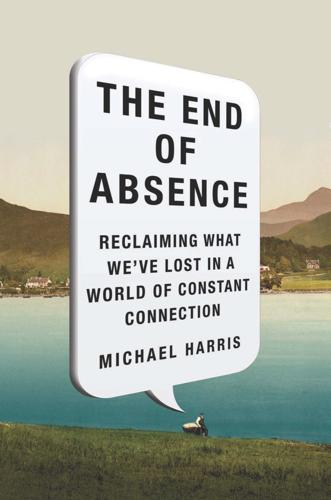
The End of Absence: Reclaiming What We've Lost in a World of Constant Connection
by
Michael Harris
Published 6 Aug 2014
Perhaps teenage girls offer the ultimate example, projecting their avatars insistently into social media landscapes with an army of selfies, those ubiquitous self-portraits taken from a phone held at arm’s length; the pose—often pouting—is a mainstay of Facebook (one that sociologist Ben Agger has called “the male gaze gone viral”). But as Nora Young points out in her book The Virtual Self, fervent self-documentation extends far beyond the problematic vanities of teenage girls. Some of us wear devices that track our movements and sleep patterns, then post results on Web sites devoted to constant comparison; others share their sexual encounters and exercise patterns; we “check in” to locations using GPS-enabled services like Foursquare.com; we publish our minute-by-minute musings, post images of our meals and cocktails before consuming them, as devotedly as others say grace.
…
A video of the segment can be found on YouTube: http://youtube.com/watch?v=bgxNItGmiC4. One Carnegie Mellon researcher: Chloe Albanesius, “Social Security Numbers Revealed . . . with Facial-Recognition Software?,” PCMag.com, August 1, 2011, accessed January 10, 2014, http://www.pcmag.com/article2/0,2817,2389540,00.asp. “the male gaze gone viral”: Meghan Murphy, “Putting Selfies Under a Feminist Lens,” Georgia Straight, accessed March 19, 2014, http://www.straight.com/life/368086/putting-selfies-under-feminist-lens. “Self-tracking is . . . revelatory”: Nora Young, The Virtual Self: How Our Digital Lives Are Altering the World Around Us (Toronto: McClelland & Stewart, 2012), 45.
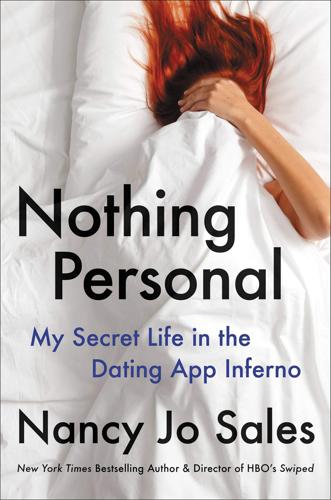
Nothing Personal: My Secret Life in the Dating App Inferno
by
Nancy Jo Sales
Published 17 May 2021
And then everybody was on dating apps, which were specifically for hot pictures—and then dating apps got linked to Instagram and Facebook and Snapchat. “So now any time you post anything,” she went on, “you have to be thinking some guy might be checking you out off of Tinder or Bumble or wherever. The male gaze is constant. But that’s all of social media,” she added. “I’ve had guys I don’t even know slide into my DMs like, ‘Hey, girl, I like that ass.’ Like, I’m supposed to be flattered by this? Like that’s the most important thing about me? “But then”—she smiled—“I did kinda post all those pictures of my ass looking hot.”
…
The digital revolution gave men platforms on which they could freely comment on women as objects—not to mention harass them personally, usually without any accountability or consequences, all under the guise of the First Amendment. * * * But while tech made millennial men feel powerful in their command of the male gaze, and the culture at large was raising them to want to be ballers, economic factors made it unlikely that most would ever achieve baller status. For though millennial men are more educated than men of previous generations, their education hasn’t necessarily led to better or higher-paying jobs. In 2014—the same year dating apps blew up—men ages twenty-five to thirty-four were unemployed at levels not seen since 1980, according to Pew.
…
When I opened the door and the Pie Boy saw me like this, I did a little twirl for him in my apron and heels. I thought he was going to pass out. It’s for moments like this, I thought, that we sometimes do these things—less for the sex than for the chance to watch them lose their shit. The good ol’ male gaze. I pulled the hulking Pie Boy into my bedroom as I slowly took off my apron, all the while talking dirty to him. I let the apron slip down over my boobs and started running my hands all over myself. I went all “Put the Blame on Mame,” for him, Louis Armstrong blowing his horn on my playlist. I watched the Pie Boy watching me, getting so rattled and hard as he quickly, awkwardly undressed, almost falling over while he pulled off his pants.
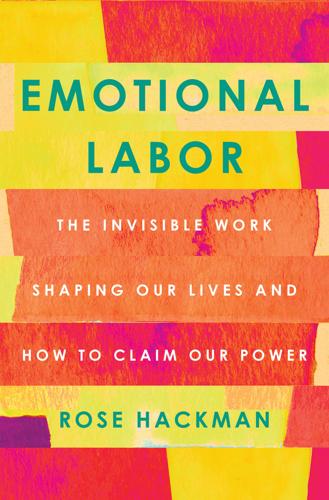
Emotional Labor: The Invisible Work Shaping Our Lives and How to Claim Our Power
by
Rose Hackman
Published 27 Mar 2023
Well, if they are leaving the home, then what are they doing it for?” Avery asked, taking on the perspective of a male harasser. Women may now occupy close to half of the formal workforce, but public spaces are still seen as male, so when women enter them, it is still assumed to be according to men’s rules, for the male gaze, or for male entertainment.20 This leap that associates a status of sex object or sex worker with a woman worker helps entrench a lower status that justifies poor—even punitive—treatment across the board. Emotional labor is joined by perceived sexual labor as feminized forms of work that under patriarchal capitalism belong in the home and are to be shunned if they exit it.
…
The sexual liberation of the 1970s combined with the proliferation of widely available contraception loosened values around people having sex generally, but the same work was not done around uncovering the kind of sex men and women wanted to have more specifically. A sexist Freudian theory that supposedly mature women enjoy orgasms through penetration has survived—in spite of clear and consistent discrediting over decades. In recent years, the explosion, with the internet, of male-gaze-centric porn has only entrenched nineteenth-century belief systems. This, combined with a lack of comprehensive, centralized sex education, has produced a culture of opaqueness around female sexuality, maintaining a patriarchal belief that the main goal of hetero sex is men’s pleasure. One man I interviewed, Felix, a doctor also in his thirties, explained that when he first started having sex with women as a teenager and young man, he was “confused that women weren’t coming through penetration like in porn.”
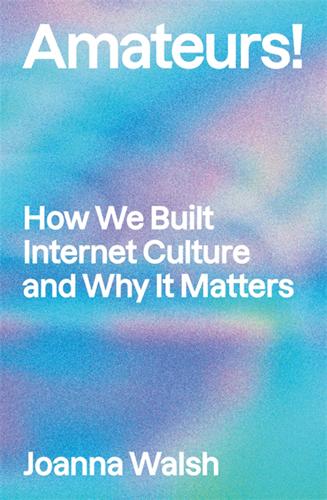
Amateurs!: How We Built Internet Culture and Why It Matters
by
Joanna Walsh
Published 22 Sep 2025
In Excellences and Perfections, @amaliaulman (the character) spends time at an 144all-female new-age retreat where Kristeva’s ‘women’s time’ merges with ‘me-time’. Ulman’s avatar reports finding older women beautiful for the first time there, because ‘they don’t live by the constant menace of the male gaze’. @amaliaulman begins to find older ‘women from the outside world’ ugly: ‘Their faces shine too much. And worst of all, worse than all the weird accessories, and surgeries and hair dye, are their infantilised manners: they fulfil the cliche of the stupid middle-aged woman.’38 Ulman’s avatar does not find these behaviours repulsive in women who successfully inhabit feminine cultural ideals, and on the same page describes a meeting with an older man without mentioning his appearance at all.
…
A., 148 fascism, resurgence of, 155–6 female aesthetic expression, 166–7 female beauty, critique of the standards of, 142–3 feminine performance, of lack, 136–46, 137 feminisation, 15, 142 feminist representation, 142 Ferrante, Elena, 135–6 fiction, 95–6 truth in, 189–93 fictional people, 132 fictionalisation, 95 financial security, 210 financialisation, 213 finished product, 43 Fisher, Joseph P., 95 Fisher, Mark, 23, 48, 75, 106, 129 Flarf, 45–6 Flota, Brian, 95 folk art, 160 folksonomy, 159 form, and content, 35 Foucault, Michel, 33–4, 131, 132, 202 4chan, 31, 42, 48, 73 #gamergate, 30 fragmentation, forms of, 80 fragments, aesthetic history, 104–5 frame-breaking, 89 frames, 86–7 Frankfurt School, 155 Fraser, Nancy, 168–9, 169–70 free content, proliferation of, 3 Frere-Jones, Sasha, 83 Freud, Sigmund, 12, 57, 63–4, 66 future, the, nostalgia for, 69–73, 70 futurism, 57 #gamergate, 30 gamification, 43–4 Gardner, Drew, 46 Garrett, Marc, 22 Gates, Bill, 216 Gay, Roxanne, 195255 gaze as action, 54 and art, 127 machine, 57 male, 143 technological, 62, 72 Gebru, Timnit, 122–3, 126 gender, and race, 166 Genette, Gérard, 66 gentleman amateur, the, 7–8, 11 geographic metaphors, 219–20 Gevison, Tavi, 144–5 gig workers, 218 Gigapixel, 108 Girl with a Pearl Earring (film), 121 Girl with a Pearl Earring (Vermeer), 105, 105–7, 121–2, 124, 129–30 The Girl with the Pearl Earring (Chevalier), 121–2, 129–30 Glaze, University of Chicago project, 117 Gompertz, Will, 21 Goodman, Nelson, 210 Google, 1, 205 Ethical Artificial Intelligence Team, 122 Google Adwords, 114 Google Books, 116 Google infamy, risk of, 187–9 Goop, 137, 145 governance, 222 GPT large language model, 113 GPT NLP (natural language processing) models, 104 Greenberg, Clement, 24 Grey Academia, 154, 163 Grossman, Lev, 5 group feeling, 103 Guattari, Felix, 54, 84, 86, 98 Gyford, Phil, 57 Habermas, Jürgen, 191, 192–3 hackable environment, 87 hackers, 216–18 hacks, 219 Hall, Stuart, 169 Hallmark Cards, 21 Halter, Ed, 16–18, 21 Hammer, Barbara, 150–2 Hanisch, Carol, 198 happenings, 82, 98 Hardin, Garrett, 213 Harney, Stefano, 218 Harper, Adam, 71 Harvey, David, 151, 213 hashtag activism, 201 hate campaigns, 30, 142 hauntology, 73–6 Hebdige, Dick, 24, 93, 95, 166, 168, 171, 172 Hediger, Vinzenz, 19 Hegel, Georg Wilhelm Friedrich, 133, 206–7 Heidegger, Martin, 132–3, 136 Hepola, Sarah, 194, 194–5 Herbert, Martin, 76 Heti, Sheila, 132, 133 hinge algorithms, 1 Hirschman, Albert, 92 historical past, aesthetic colonisation of, 74–5 Holmes, Anna, 183–4 Holocaust, the, 95–6 Homebrew Computer Club, 216 ‘Homesick for a Place I’m Not Even Sure Exists’ (meme), 70 horizontal platforms, 89 Horkheimer, Max, 154–5, 160, 206 Houellebecq, Michel, 131 Hughes, Robert, 107 Huh, Ben, 29, 30, 33–4, 35, 40, 49, 51 humour, AI and, 101 hyperlinks, 147, 150 hyperobjects, 47 hysterical criticism, 182–3 hysterical realism, 182 IBM, 69 idealism, and the market, 222 identification, 10–11 identity, 137, 158 and aesthetic representation, 164, 166–71 and consumer choice, 162 contingent, 167 Fraser’s model, 168–9 marginalised political, 167–8 offline, 162256 online, 161–4, 165, 166–71, 196 political, 161 reification of, 168–9, 169–70 remaking, 16 status model, 168–9 trash essays and, 195–6 identity choice, 171 identity-in-progress, 163 image addiction, 125–6 image descriptors, 119 imaginary products, 69 immediacy, 91 inauthenticity, 73, 128 individualism, 5, 8, 16, 181, 218 Industrial Revolution, 14–15, 154 ineptitude, 18 influence, long-term, 18–19 influencers, 14, 138–42 information capitalism, 35, 211 information overload, 36 Instagram, 6, 23, 89, 90, 106, 208, 220 body-positive movement, 146 creators, 139–40 Excellences and Perfections (Ulman), 137, 138–42, 143–5, 145–6 intent, 177–8 interaction, 4–5 interest, 49 internet aesthetics, 22 internet conditions, 2–3 internet eras, 202 internet-native, aesthetics, 52 intuitive creativity, 184 Israel, targeting of Hamas members, 56 It Follows (film), 62 Jackson, Robert, 58 Jameson, Fredric, 74, 96–7, 113, 125–6, 181 Japanese economic boom, visual ephemera, 72 Jezebel (online magazine), 176, 183 incest essay, 179–80, 188–9 style, 183–4 jokes, 32 jouissance, 12 ‘Judge Dredd’ (comic strip), 93–4 judgement, 29, 183, 205 juxtapolitics, 169, 205 Kant, Immanuel, 21 and aesthetic experience, 36–7 and aesthetic judgement, 24, 29 and aesthetics, 9–10, 205 magnitudinal sublime, 37–8 Kardashian, Kim, 142 Karp, David, 55 Kiki de Montparnasse, 139 Kitay, Kat, 208–9 kitsch, 20–1, 61, 67, 128–9, 160–1 aesthetic alienation, 208 Fisher’s, 75 music, 74 nostalgia for, 75 Knapp, Steven, 34 Know Your Meme, 33–6, 36, 37 knowledge, love of, 36 Kornbluh, Anna, 91 Kottke, Jason, 55 Kristeva, Julia, 89–90, 185 Lacan, Jacques, 12, 13, 38, 147, 148 lack, feminine performance of, 136–46, 137 LAION, 118–19 Land, Nick, 91–2, 94 language, and AI art, 123–4 language use LOLcats, 39–41 racialised, 41–2 large companies, domination of the internet, 219–20 L’Arrivée d’un train en gare de La Ciotat (film), restoration, 107, 108 Lavender AI, 56 Lefebvre, Henri, 6, 14–16, 208–9, 210 legacy media, 47 aesthetics, 52 borrowings from, 41 leisure, 14–16, 45 commodified, 13 illusion of, 90 leisure/work paradigm, 15 Les Immatériaux (exhibition), 209 Lettrism, 161 libertarianism, 7 lifestyle journalism, 188 likes, 2, 28 Linux, 215–16257 Liszewski, Andrew, 108 LiveJournal, 215–16 liveness, 97 LOLcats, 27, 27–9, 50 aesthetic appreciation of, 38–41, 39 aesthetic reactions, 28 avowed triviality, 49 and content creation, 49 language use, 39–41, 42 novelty, 50 origin, 30 pleasure of, 47 production process, 28 purposive purposelessness, 44 LOLspeak, 40, 42 London, Furtherfield Gallery, 22 London Review of Books (magazine), 65, 182–3 Lonergan, Guthrie, 210–11 Lorenz, Taylor, 184 love, 218–19 low-class art, 20 lowest common denominator, estrangement with, 103 Lumière brothers, L’Arrivée d’un train en gare de La Ciotat, 107, 108 Lyotard, Jean-François, 47, 125, 209 machine gaze, 57 Macintosh Plus, 72, 78 McLuhan, Marshall, 135, 139 McNeil, Joanne, 54 Magee, Mike, 46 mainstream recognition, 20 male gaze, 143 male narratives, 11 Man Ray, 139 Marcuse, Herbert, 24, 43–4, 154–5, 166–7 Markbreiter, Charlie, 33 market, the, and idealism, 222 Martinussen, Einar Sneve, 54 Marx, Karl, 84, 206–7 mashups, 103, 105, 105–7 masses, the, fear of, 181 Massumi, Brian, 170, 208 Mbembe, Achille, 166–71 mean image, the, 119 mechanical art, 37 media technologies, 83–4 Meme Map, Web 2.0, 85, 86 memes, 53, 220 aesthetic appreciation of, 37–41 Blackface, 41–2, 42 conceptualisation, 28, 29 financial value, 30–2, 33 originators, 33–5 ownership, 32–3 snowclones, 39, 39 meming, 28–9, 29 anonymity, 30–1 memory computer, 64 locations for, 67 return to objects, 77 screen, 63–5, 66 screen memoirs, 65–9 values, 63–4 memory-leak, 64 Merleau-Ponty, Maurice, 124, 127 Meta, 115 Microsoft, 121 Minga, 157 misogyny, 30, 184 Mitchell, Elma, 147 mixtapes, 79, 83 moderators, 203–4 modern art, generative principle of, 19 modernism, 127–8, 129 modulation, 39 monetisation, 124–5 monetised production, 212–13 Moore, Marcel, 139 moral judgement, 183 morality, 178 Morton, James, 219 Morton, Timothy, 47 Moten, Fred, 218 motivation, 6 Muñoz, José Esteban, 162 Musk, Elon, 82, 200 Nakagawa, Eric, 29, 30, 40, 51 Nancy, Jean-Luc, 82, 99 narcissism, 152, 181 narrativising, of the self, 190 Nasty Nets internet surfing club, 210–11 Nedroid, 18258 net art, aesthetics, 21–2 Netflix, 44 Neukirchen, Chris, 55 Neuro-sama, 122 New Aesthetic, the, 53–9, 62, 70–1, 73, 76 New Inquiry (magazine), 33 new media, 52–4, 75 New Narrative movement, 197 New York Times Magazine (magazine), 137 New York Times (newspaper), 120, 159 New Yorker (magazine), 94 NFTs (non-fungible tokens), 32–3, 212–13 Ngai, Sianne, 23, 36, 37–41, 43–6, 198–9 aesthetic categories, 27–8, 29, 35, 37, 49, 50 on aesthetic judgment, 163 analysis of It Follows, 62 on envy, 145, 146 gimmicks, 219 Ugly Feelings, 97–8, 184 zany workers, 141, 206 Nightshade, University of Chicago project, 116, 117 9/11 Memorial and Museum, 98–9 noble picturesque, the, 60–2 noise, 93 Northwestern University, Illinois, 204 nostalgia, 57, 58, 60–2, 67 for the future, 69–73, 70 for kitsch, 75 nostalgia mode, 74–5, 76 nostalgic aesthetics, 20 Not Safe For Work, 44–5 nothing, production of, 13 Noys, Benjamin, 91–2, 93 objectification, 136–46 offline identity, 162 Olson, Marisa, 142–3, 210–11 online aesthetics, 21–2, 153 online appearance, 136–46 online choice, 137 online creations, as art, 2 online creators, professional, 3 online engagement, 3 online experience, immaterial appearance, 81 online identity, 161–4, 165, 166–71, 196 online platforms, user-friendliness, 3 online vocabulary, 220 Ono, Yoko, 141 OpenAI, 118, 204, 205–6, 209 openness, 218 open-source, 215–16 O’Reilly, Tim, 5, 86 original work, the aura of, 10, 31, 32 originators, 33–5 Other Voices, Other Rooms (Capote), 133–4 outdatedness, 52 outsourcing, 90 Ovation Technologies, 69 overexploitation, and digital commons, 213 oversupply, 33 Oyler, Lauren, 182–3, 185 Paltrow, Gwyneth, 137–8, 145 Papin sisters, the, 147, 148, 151–2 para-academic practice, 199 para-epistemophilic feeling, 36 Paraflows Urban Hacking Festival, 30 parodies, 35–6 participation, via action, 159 pastiches, 35 peer-to-peer online services, 211 people, the, 103 Percy, Walter, 39 Perec, Georges, 44 Perelman, Bob, 113 performance, 16 performance art, 82, 136–46 performative communication, 200–1 personal data, collection and sale of, 7 personal essays, 175–6, 181–2 personality, 154 Peterson, Latoya, 185 @pharmapsychotic, 108–12 photographers, 139–40 photographs, 17, 114, 140 photo-identity, 120 photorealism, 112–13 picturesque, the, 61–2, 69, 76 pile-of-poo emoji, 46, 46259 Pinterest, 208, 213 Pixels, Kane, 73–4 platform capitalism, 202–3 platform owners, 89 Plato, 7 play, 44–5, 206 pleasure principle, 12 plot-driven narratives, 172–3 poetry, 9, 46 Poetry Virgins, 147, 148 political identity, 161 political representation, 92–3 politics aestheticisation of, 143 as aesthetics, 201 Poole, Christopher, 30 poomoji, 46, 46 poor images, 60, 62 postinternet art, 142–3, 210–11 postmodernism, 72, 76, 125–6, 129 Pound, Ezra, 19 prediction, ideology of, 119–21 Presser, Shaun, 115–16 Prin, Alice, 139 print media, 5 private life, 195 pro/am division, 17 process, concern with, 56 production means of, 11 production of, 98, 217 separation from reproduction, 161 professional modes, amateur adoption, 16 professional skills, bypassing, 215 professional status, desire for, 3 professionalisation, 14 professionalism, amateurised, 1 profiles, 7 proletarian amateurs, 8, 9–10 prompt engineering, 114 Propp, Vladimir, 160 public voice, 195 public/private division, 16 purposive purposelessness, 44–5 Quaranta, Domenico, 22 race, and gender, 166 racialised language use, 41–2 racism, 41 radical naturalism, 184 radical trust, 6, 159, 205 radical we, the, 3 Rancière, Jacques on art from everyday life, 104–5 aesthetic regime, 208 on audience, 211 classical Greek spectator, 127 on dangerous classes, 26 on performance, 16 on play, 44, 49 and politics, 93, 99, 205 and risk, 19–20 rating, 139 ReadWrite, 161 readymades, 17, 31 realism, 106–7, 184 reality, 20 experience of, 10 and representation, 142 recognition, 20 Reddit, 203–4, 219 Reisner, Alex, 115 Relational Aesthetics, 18–19 remade material, 158 remix art, 43 remix culture, 79, 161 Render Me Tender (Armstrong), 125 repetition, 106, 149, 151 re-politicisation, of art, 11 representation crisis in, 92–4 and reality, 142 of women, 119 reproduction, separation from production, 161 research-based art, 35–6 retrofuturism, 57 revivalism, 76 rewards, 29 Ricoeur, Paul, 34 Riefenstahl, Leni, 177 Rights Alliance, 115 Riley, Denise, 134 risk, 18–20 RLHF (reinforcement learning from human feedback), 205–6260 romanticisation, 157 Romanticism, 103 Ronell, Avital, 136 Rosler, Martha, 147 Ruskin, John, 61–2, 69 Russell, Legacy, 97 Saito, Yuriko, 128 salaried work-time, outside of, 216–17 Sato, Atsuko, 32 Schopenhauer, Arthur, 37 sci-goth, 57 scrapbooking, 158–60 screen, the, artifice of, 10 screen memoirs, 65, 65–9 screen memory, 63–5, 66 search engine optimisers, 114 Sedgwick, Eve Kosofsky, 162, 198 self, the, narrativising of, 190 self-accounting, 134–35 self-creation, 140 self-deception, 133–4 self-identification, 162 selfies, 6, 103, 140 AI art, 108–12, 109, 110, 111, 112, 113 double sense of, 144–5 trash essays as, 187–8 self-possession, 195 self-quantification, 36 self-representation, 136–46 self-transformation, 163 sensations, 37 sensus communis, 29 September 11th terrorist attacks, 78, 94–5, 96, 98–9 servers, ecological cost of, 76–7 sexual content, 45 shareholder profits, 203 Shiryaev, Denis, 108 shock of the new, the, 107, 128 shock of the real, the, 107 Shrimp Jesus, 214, 214–15 side-hustles, 3, 9, 14 The Simpsons (TV show), 47 skeuomorphic, 53 slickness, 18, 71–2, 101 slow violence, 95 snapshots, 64–5 snowclones, 39, 39, 51–2 social art, 48–9 social contract, the, 203 social media, 6, 7, 92, 135, 161, 189–90, 221–2 social mobility, 11, 13–14 social reproduction, 206–7 Sollfrank, Cornelia, 207 @soncharm, 101, 102, 103 Sontag, Susan, 66, 177–9, 182–5 space aesthetic, 220 creation of, 222 cyber, 219 geographic metaphors, 219–20 ownership, 89 virtual, the as, 86 Spahr, Juliana, 97–8 spammers, AI and, 214 spatial metaphors, 86–7 Speaklolspeak.com, 51 spectatorship, 36 speed, metaphors of, 91–2 Speed, Mitch, 209–10 Spellings, Sarah, 173 Spike Art Magazine (magazine), 208–9 sport, 43 Spotify, 89 Squid Game (TV show), 44 Srnicek, Nick, 92 Stable Diffusion, 118–19 Stamboliev, Eugenia, 215 Stanford Institute for Human-Centered Artificial Intelligence (HAI), 123 Starobinski, Jean, 185 steampunk, 57 Stein, Gertrude, 38 StereoSet, 123 stereotypes, 10–11, 119, 123 Sterling, Bruce, 54, 55, 56–9 Stewart, Kathleen, 162 Steyerl, Hito, 9–10, 60, 62, 117, 119, 209 Stiegler, Bernard, 205, 215, 216–17, 218 Strategy (magazine), 6 Stubbs, David, 94 stuplimity, 37–38, 39–40, 42261 subcultures, 24, 166–7, 171–2, 217–18 sublime, the, 38, 47, 61, 103, 125 subreddits, 203–4 Substack, 6 suffering, engagement with, 141 suggestion and suggestiveness, strategies of, 148 Sullivan, Gary, 45–6 surface picturesque, the, 61–2, 76 surplus-enjoyment, 12–13 surplus-value, 11, 12, 13 Surrealism, 54, 161 surveillance cams, 54 SweetcrispyJesus, 154 tagging, 159 tape recorders, 83 taste, 13, 103, 128 tattoos, 171 tax, 7 taxonomy creation, 2 Tay, 121, 122 Taylor, Brandon, 190 techno-capitalist worldview, 162 technological gaze, 62, 72 technoromanticism, 209 temporo-cultural disruption, 76 Tencent, 204 terms, Jathan Sadowski, 123 TESCREAL, 126 textual meaning, 131–6 TikTok, 6, 89, 220 Time (magazine), Person of the Year, 5 time and temporality, 76, 80, 86 accelerationism, 91–9 as a medium, 91 pre-internet media, 96–7 spending, 89 time spent scrolling, 91 Tofuburger, 30 Tolentino, Jia, 176, 177, 179–80, 189, 193, 197–8 Topaz Labs, 108 Torres, Émile P., 126 Torvalds, Linus, 215–16 tradition, 80, 81 transcription, 79–80, 84, 97–8 transgression, 19–20 transmission, 79–81, 90 trash essays, 175–99 boom, 180 clickbait prurience, 183 conceptualisation, 176–7 and content, 177–81 content-as-style, 185–7 as debut writing, 177 as economic event, 194 exclusion, 183 fear of, 181 forward movement, 185–6 frame story, 194–6 hysterical criticism, 182–3 identity and, 195–6 intent, 178, 180 methodology, 198 misogyny, 184 and narcissism, 181 normalisation of, 185 and personal essays, 181–2 risk of, 187–9 as selfies, 187–8 and style, 177–80, 183–7, 197 stylelessness, 184–5 writing, 197 trust, 159 truth, 189–93, 198 tumblelogs, 55–6 Tumblr, 23, 54, 55–6, 60, 106, 208, 213 Turing, Alan, 63 Turks, 119 Twitter, 6, 89, 103, 134, 203, 220, 221 demise of, 200–2 Ugrešiç, Dubravka, 66, 67 Ulman, Amalia, 137, 138–46 Unebasami, Kari, 29, 30, 40, 51 University of Chicago, 117 University of Warwick, Cybernetic Culture Research Unit (CCRU), 94 unpaid labour, 5 unrealism, 129 user space, 86 user-friendliness, 3 user-generated content (UGC), 5–6, 16 users, need for, 90 Valéry, Paul, 127 value, 161262 Vanity Fair (magazine), 54, 57 vaporware, 69, 70 vaporwave, 69–73 doom-mongers, 74 hauntology, 73–6 revivalism, 76 vectoral aesthetic capitalism, 89–90 vectoralist classes, 213 vectors, 89 Ventura, Claude, 151–2 Venvonis, Gregory, 171–2 Vermeer, Johannes, Girl with a Pearl Earring, 105, 105–7, 121–2, 124, 129–30 Vestiaire Collective, 121 virtual, the, as space, 86 virtual commodities, 137 voices, 92–9 vulgar, the, 103, 185 vulnerability, 170 Wal, Thomas Vander, 159 walking while black meme, 19 Warhol, Andy, 31, 106 Wark, McKenzie, 89, 213, 216, 217, 219, 220 water scarcity, 209 Watkins, D., 187–8, 188–9, 196 we, use of, 3 Web 1.0, 5 Web 2.0, 4–7, 53, 161, 203, 211–13 meme map, 85, 86 Web3, 211, 212–15 what if thought, 126 white narratives, 11 Wiki software, 35–6 Wikidentities, 170 Wikipedia, 1, 153 Williams, Alex, 92 Willison, Simon, 118–19 Winckelmann, Johann Joachim, 104–5 Wired (magazine), 54 women, representation of, 119 Woods, James, 182 Wordpress, 215–16 Wordsworth, William, 9 work environment, 47 having fun at, 48–9 product of, 206–7 as safe place, 45 workers, as product, 206–7 working-class enthusiast, the, 8, 11 world building, 172–3 writing, 97–8 X, 205 Youngman, Hennessy, 211 your mom stereotype, 58–60, 62–3 YouTube, 71, 97 The Disintegration Loops (video), 81–3 zany, the, and zany workers, 43–4, 141 Žižek, Slavoj, 21 Zo, 121, 121–2 Zuckerberg, Mark, 81

Hormone Repair Manual
by
Lara Briden
Published 14 Apr 2021
The more we see powerful, successful grey-haired women, the more we will learn to view grey as ‘distinguished’ for women, just as we do for men. There are several positive aspects to menopausal invisibility. On the men front, there’s the fact that you are less likely to attract unwanted attention from random men on the street, a decidedly positive change. ‘Sailing under the radar of the male gaze seems to be a problem for precisely no one’, observed Sam Baker, the former editor of Cosmopolitan UK. If you’re like me, you may also find yourself less distracted by potential romantic partners, which leaves room to think about other things. It’s a freedom from being preoccupied with sex the way you might have been when you were younger, but it doesn’t mean you stop having sex if having sex is what you want to do, either with a partner or with yourself.
…
.: ‘You don’t owe prettiness to anyone’, Quote Investigator, 3 June 2014, quoteinvestigator.com/2014/06/03/prettiness 33: Brené Brown says that . . .: B Brown, The Gifts of Imperfection: let go of who you think you’re supposed to be and embrace who you are, Center City, Minnesota: Hazelden, 2010. 34: ‘Sailing under the radar of the male gaze . . .’: G Hinsliff, ‘“A weird liberation”: why women are exposing the wild truth about midlife and menopause’, The Guardian, 22 September 2020, theguardian.com/lifeandstyle/2020/sep/22/weird-liberation-women-wild-truth-midlife-menopause 34: In the meantime, I like how Lisa Renee describes . . .: L Renee, ‘Open letter to women: notes on a body’s midlife storms’, Medium, 20 November 2014, medium.com/s/the-long-middle/open-letter-to-women-4509c2f65c1d 35: To cope with what British journalist Caitlin Moran calls . . .: C Moran, ‘Me, drugs and the perimenopause’, The Times, 4 July 2020, thetimes.co.uk/article/caitlin-moran-me-drugs-and-the-perimenopause-mpzn2cdh2 36: In a beautiful essay called ‘The wildness of girlhood’ . . .: BM Liston, ‘The wildness of girlhood’, Overland, 2 July 2019, overland.org.au/2019/07/the-wildness-of-girlhood 37: Liston’s description of girls is in line with . . .: E Hancock, The Girl Within, New York: Fawcett Columbine, 1989; Los Angeles Daily News, ‘Girls lose their sense of self before their teens, research shows’, Baltimore Sun, 2 March 1993, baltimoresun.com/news/bs-xpm-1993-03-02-1993061035-story.html 38: For example, in a study of women . . .: Y Beyene, From Menarche to Menopause: reproductive lives of women in two cultures, Albany, New York: State University of New York Press, 1989. 38: According to grief expert David Kessler . . .: P Picardi, ‘What to do with the sadness you’re feeling right now’, GQ, 12 May 2020, gq.com/story/david-kessler-on-grief-and-sadness 39: It’s even more of a relief to hear it said by others . . .: J Mazziotta, ‘Gillian Anderson on dealing with early menopause: “I felt like somebody else had taken over my brain”’, People, 13 March 2017, people.com/bodies/gillian-anderson-perimenopause-depression 39: ‘When the 50-year-old woman says to herself . . .’: G Greer, The Change: women, aging, and the menopause, New York: Bloomsbury Publishing, 2018. 40: ‘It’s weird that women and whales . . .’: B Alex, ‘The grandmother hypothesis could explain why women live so long’, Discover, 2 April 2019, blogs.discovermagazine.com/crux/2019/04/01/grandmothers-remain-an-evolutionary-mystery/-.XWcgPugzbb2 40: According to Stanford historian Walter Scheidel . . .: A Ruggeri, ‘Do we really live longer than our ancestors?’
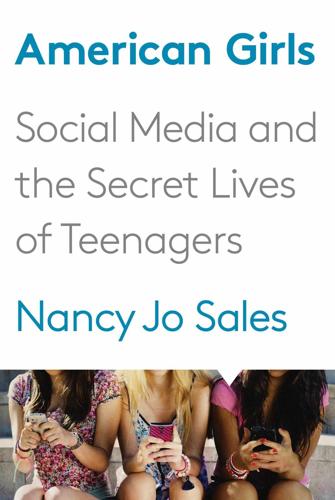
American Girls: Social Media and the Secret Lives of Teenagers
by
Nancy Jo Sales
Published 23 Feb 2016
Washington State “Misogyny now has become so normalized,” says Paul Roberts, the Impulse Society author. “It’s like we’ve gone back to the Mad Men days. We can’t even see the absurdity and the inequity of it, it’s so pervasive. When the male gaze was digitized, it was almost as if it was internalized. With smartphones and social media, girls had the means of producing the male gaze themselves, and it was as if they turned it on themselves willingly in order to compete in a marketplace in which sex was the main selling point. “And the social media companies aren’t going to do anything about it, as long as it’s driving traffic.
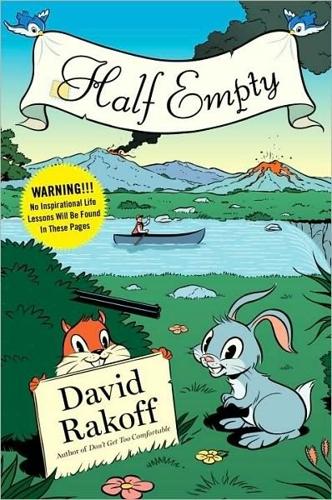
Half Empty
by
David Rakoff
Published 20 Sep 2010
But everything is confusing about this event, right down to its very name: Exotic Erotic. It conjures up notions of a no-holds-barred display of our richly colored tapestry of human libido, where anything goes. Freedom of Expression, as advertised. There is an extravaganza of women exposed to the male gaze, for sure, but beyond that, anything most emphatically does not go. There is nary a nod to female desire, and as for deviations farther afield, say, a reasonable expectation of a homo presence—especially with June’s Gay Pride Parade looming just a few weeks away—it is limited to just one gay exhibitor: Lucas Entertainment, the porn studio owned and operated by Russian impresario Michael Lucas.
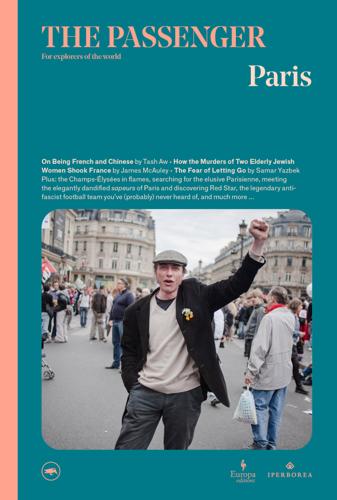
The Passenger: Paris
by
AA.VV.
Published 26 Jun 2021
At the end of one Parisian fashion show the designer admitted to me that the inspiration behind the collection was ‘Existential raver – but chic’. The result? A new marketing concept: removing the guilt from the act of buying by lending it an intellectual justification. You assure the customer that they will be both feminine and feminist; on point, engaged but not losing the ability to pull the male gaze. That is why over the years intellectual prowess has been highly prized in the world of advertising: Leïla Slimani, author and Goncourt Prize-winner, makes feminist podcasts for Chanel; Adrien Barrot, a graduate of the prestigious Parisian École Normale Supérieure, is a creative and visual advisor for Hermès; Sophie Chassat, a philosophy graduate from the same university, is a consultant for the luxury group Kering, where she teaches brands to link the ideas of Nietzsche or Spinoza to their commercial vision.
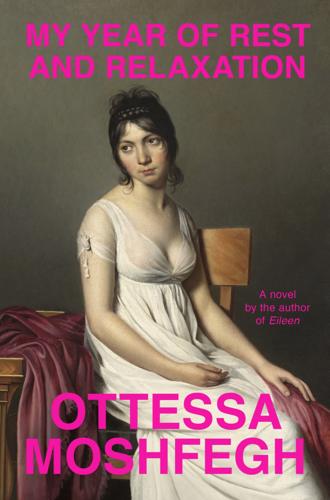
My Year of Rest and Relaxation: A Novel
by
Ottessa Moshfegh
Published 9 Jul 2018
They were black suede stiletto boots, and they’d cost almost five hundred dollars, one of many purchases I’d made to mitigate the pain of having lost my parents, or whatever it was I was feeling. I could remember all of this, each sniveling, pouty face in that classroom. One idiot said I was “broken by the male gaze.” I remembered the tick of the clock as they stared. “I guess that’s enough,” said the professor, finally. I was permitted to take my seat. Out the window of the classroom, flat, wide yellow leaves fell from a single tree onto gray concrete. I dropped the class, had to explain to my adviser that I wanted to focus more on Neoclassicism, and switched to “Jacques-Louis David: Art, Virtue, and Revolution.”

Dataclysm: Who We Are (When We Think No One's Looking)
by
Christian Rudder
Published 8 Sep 2014
The full depravity of the phenomenon can’t hit you until you search for these tags yourself and are confronted with an unending page of broken bodies tilting at the camera—not only are the “inspiring” women deathly thin, they are also frequently in lingerie, bikinis, underwear. The blogs, created by women, are truly the epitome of the male gaze—and I say this as a person reflexively skeptical of the language of the academic left. Tumblr and Pinterest banning the content didn’t solve anything, of course, least of all their users’ body-image issues, so the sites are now taking another approach. Because these blogs are tagged, they are able to intervene algorithmically—search for thighgap on Tumblr and the screen goes blank, an overlay appearing: “if you or someone you know is dealing with an eating disorder …” A link to help and resources follows.

Empire of Illusion: The End of Literacy and the Triumph of Spectacle
by
Chris Hedges
Published 12 Jul 2009
Indeed, the “hood” represents liberation from the cage, and the pay-off is a satiated white woman (or man) who has been completely and utterly feminized by being well and truly turned into a “fuckee.”7 Dines writes that the black body that is celebrated as uncontrolled in interracial pornography is the same body that must be controlled and shackled in the world of white supremacy: Just as white suburban teenagers love to listen to hip-hop and white adult males gaze longingly at the athletic prowess of black men, the white pornography consumer enjoys his identification with (and from) black males through a safe peephole, in his own home, and in mediated form. The real, breathing, living black man, however, is to be kept as far away as possible from these living rooms, and every major institution in society marshals its forces in the defense of white society.

Primates of Park Avenue: A Memoir
by
Wednesday Martin Ph.d.
Published 1 Jun 2015
And, it’s true, because you would command a very particular, twisted form of Manhattan respect, also known as envy, from others—other women in the know, other women whose opinion you value and whose admiration you covet—with a Birkin. It is a game among a certain set to incite the envy of other women, I was realizing as I logged my days on the Upper East Side. Much has been written about the male gaze—how it objectifies, redraws the hierarchy between men and women, renders one a looker and one the to-be-looked-at. But to live on the Upper East Side, it was dawning on me, is to see and feel the “looks” exchanged between women, or imposed upon us by each other—a gaze that is not infrequently ravenous, competitive, laser-like in its precision and intent.

12 Bytes: How We Got Here. Where We Might Go Next
by
Jeanette Winterson
Published 15 Mar 2021
Love dolls are not smiley robots who will play with the kids and teach them to code. They are not work-bots next to you in the factory, little iPals to keep your granny company, or robo-pets who will act like your favourite dog. Love dolls are different because they are designed and made to look like the male-gaze stereotype, of an unlined, underweight, cosmetically enhanced version of the female form. Then, they are programmed to behave in a way that is the absolute opposite of everything that feminism has fought for; autonomy, equality, empowerment. Woman no longer as a commodity, or existing only as a sexy, submissive, mate for her man.

This Chair Rocks: A Manifiesto Against Ageism
by
Ashton Applewhite
Published 10 Feb 2016
People can be in satisfying intimate relationships in which sex is no longer important, or perhaps never was. It’s fine to let the whole sex thing go—if that’s your choice. Germaine Greer was just one of many feminists to call for women to celebrate old age as a time of liberation from the tyranny of the male gaze and the “shackles of sexuality.”22 Opting out can bring comfort, peace, and more time and energy to devote to people and pursuits that matter more, especially for straight women without partners. Millions of widows decide that caring for one mate to the end was enough, and settle happily into single lives, solo sex, and the pleasures of caring for children at a grandparental remove.
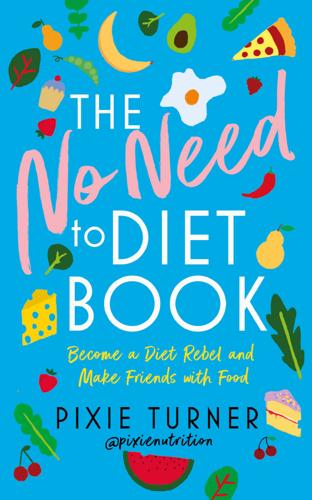
The No Need to Diet Book: Become a Diet Rebel and Make Friends With Food
by
Plantbased Pixie
Published 7 Mar 2019
One interesting way in which we can understand this relationship between body image and motivation to exercise is ‘objectification theory’. This theory is based on the idea that within our culture women are constantly looked at, assessed and objectified. What is deemed to be feminine and attractive is what gains the approval of the male gaze – a focus on the body as an object to be admired. This regular objectification can lead to a process called self-objectification, whereby women internalise these ideas and outsiders’ perspectives, which results in placing high value on aesthetics and appearance. Naturally, this needs constant monitoring and produces high anxiety about the body, which is why it leads to body dissatisfaction, body shame, lower self-esteem, disordered eating and depression.
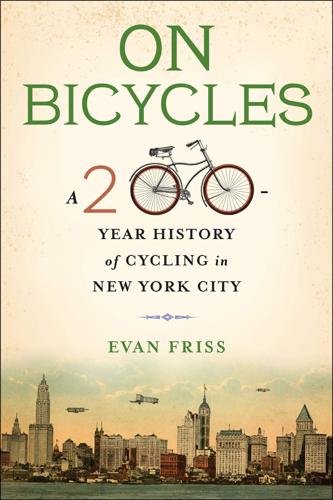
On Bicycles: A 200-Year History of Cycling in New York City
by
Evan Friss
Published 6 May 2019
Anxieties about how women behaved in public were nothing new, and the stakes in urban spaces, with countless watchful eyes, had always been particularly high. For much of the nineteenth century, gendered geography meant that while men could wander alone, “the women who walked the streets” as one historian put it, did so “as either endangered or dangerous women.” On bicycles, women were even more visible, even more subject to the male gaze; but they also could disappear out of sight. One woman was so worried that she launched a full-fledged antibicycle crusade in hopes of removing the “hellish thing” from the streets of New York and the entire country.70 Ward understood that women were held to different standards. “There is much prejudice against athletic exercise for women and girls.”
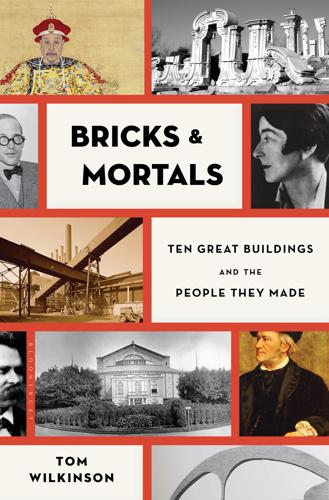
Bricks & Mortals: Ten Great Buildings and the People They Made
by
Tom Wilkinson
Published 21 Jul 2014
The fact that caryatids recur throughout Western classicising architecture speaks volumes about the persistence of female subjugation, and when Le Corbusier drew concubines all over the walls of Gray’s house, it was an atavistic act: he was trying to return a woman’s room to a harem, a prison built from male sexuality, a prison that had to be transparent because it was guarded by the male gaze. But he was closing the stable door long after the horse had bolted. There are a few centuries to get through before women escape their architectural prisons, however – dull centuries when the Church built barriers to sexuality that were stronger than any physical wall. But 1,340 years after Ovid, Boccaccio’s collection of raunchy stories The Decameron bursts like a breath of fresh air into the pious asphyxia of the Middle Ages.
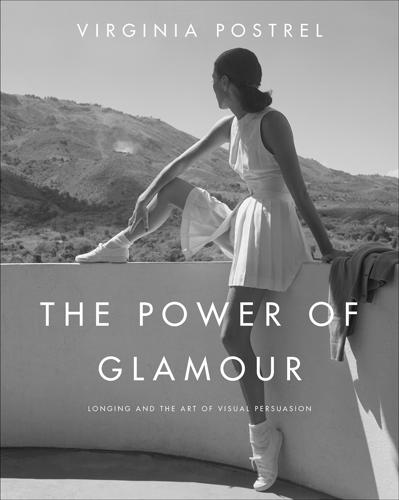
The Power of Glamour: Longing and the Art of Visual Persuasion
by
Virginia Postrel
Published 5 Nov 2013
John Lahr, “Disappearing Act,” New Yorker, February 12, 2007, pp. 38–45. 48. Star Trek, “Amok Time,” first broadcast September 15, 1967. 49. Andreas Prater, Venus at Her Mirror: Velázquez and the Art of Nude Painting, Ishbel Flett, trans. (Munich: Prestel, 2002) pp. 24–25. 50. Edward Snow, “Theorizing the Male Gaze: Some Problems,” Representations, Winter 1989, pp. 34–35. 51. Prater notes that the same pink ribbons show up explicitly symbolizing marriage in Veronese’s Mars and Venus United by Love. Andreas Prater, Venus at Her Mirror, pp. 38, 40. 52. In this capacity, it recalls a modern-day South Korean custom: “Couples place a wedding portrait, almost three feet tall, of themselves in their bedroom above the bed.

Been There, Done That: A Rousing History of Sex
by
Rachel Feltman
Published 14 May 2022
In the late seventeenth century, a writer claiming to be a female nun in Japan provided in-depth instructions for when and how to masturbate while cloistered.11 While it fits the general paradigm of that time and place in assuming that only women deprived of men would be interested in self-pleasure, the techniques it describes do seem earnest, as opposed to just being conjecture fit for the male gaze. The writer advises her audience to practice masturbation in the privacy of the toilet at first, to make sure they’re able to control themselves well enough to avoid detection when masturbating alone at night or during a lull while working. She also notes that, whenever possible, women should collect and ingest their ejaculatory fluid so as not to waste their energy.
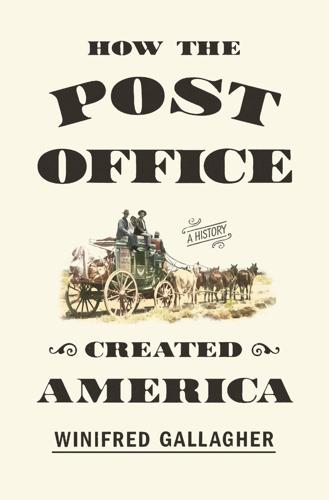
How the Post Office Created America: A History
by
Winifred Gallagher
Published 7 Jan 2016
Middle- and upper-class Victorian women were in most ways far more restricted than their mothers and grandmothers had been in terms of the freedom to choose their own pursuits and move about in the world. Particularly in big cities, architects struggled to find ways for women to appear in public places without impropriety—an effort that among other things popularized the new department stores, which offered ladies’ restrooms and restaurants for dainty luncheons safe from the male gaze. The post reflected the larger society’s ambivalence about women’s public status by commissioning buildings that used separate windows, counters, and other such contrivances to segregate them from men. The architect Ammi B. Young showed a particularly Victorian zeal in designing special female entrances and even, in 1861 in Philadelphia, a “ladies’ vestibule” screened by a heavy iron grille of the sort associated with cloistered convents.
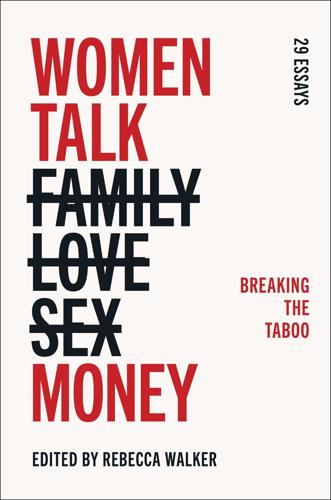
Women Talk Money: Breaking the Taboo
by
Rebecca Walker
Published 15 Mar 2022
Though I still worked with brands to make rent, I railed against the inequities of the beauty and wellness industrial complexes, and the peril of remaining complacent to the terms of a culture that prioritizes whiteness and wealth. Day in and day out, I reminded my audience and myself that true wellness—which wellness entrepreneur Sinikiwe Dhliwayo defines as agency—cannot be bought. Instead of activated charcoal and ashwagandha, we talked about Audre Lorde, the male gaze, and the political roots of self-care. I began to share pathways to lasting mental and physical health that were free—a birthright, not a commodity. I shared stories of my own loneliness, guilt, grief, and the obsessive self-editing required to live a life that looks “perfect” from the outside. And I helped introduce the use of a brand partnership inclusion rider for white influencers who wanted to take meaningful action in their own businesses.XI What happened next was, of course, what I both wanted and feared: The more antihegemonic truth I spilled online, the more influencer connections and work relationships—which had been about selling a fantasy—fell away.
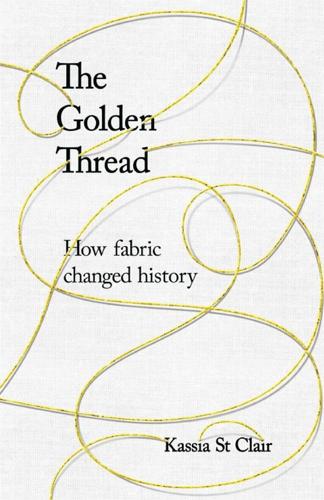
The Golden Thread: How Fabric Changed History
by
Kassia St Clair
Published 3 Oct 2018
‘It seems that women have made few contributions to the discoveries and inventions in the history of civilisation,’ he wrote in a lecture on the topic of femininity. ‘[T]here is, however, one technique which they have invented – that of plaiting and weaving.’ He argued that these skills had been honed in response to a subconscious feeling of shame and ‘genital deficiency’: that women wove to hide their lack of penis from the male gaze. Such is the power of the idée fixe.16 Accomplished spinners or needle-workers were an important – if often overlooked – part of the economy. Assyrian merchants in the second millennium, for example, frequently wrote to their female relatives about their cloth-work, asking them to make a particular kind, for example, or letting them know what was selling well.

Filterworld: How Algorithms Flattened Culture
by
Kyle Chayka
Published 15 Jan 2024
That encouraged shallowness of consumption contributes to the overall flatness of culture in Filterworld. As a young teenager, I tried to become a connoisseur of anime. From the clichés of Dragonball I progressed, thanks to forum recommendations, to still-cringey romantic-comedy anime titles like Love Hina and Chobits. These were overindulgent of the male gaze (another term for the genre was “harem anime”) but felt novel to me at the time, with their interpersonal dramas and sci-fi tropes. I had no one around me to talk to about these discoveries, only the nascent online community. I found out how much further there was to go in my own connoisseurship when I discovered Yoshitoshi ABe’s series, like Lain.

All That Glitters: A Story of Friendship, Fraud, and Fine Art
by
Orlando Whitfield
Published 5 Aug 2024
Our class comprised about forty or so students of whom Inigo and I were two of only five men. Among the female cohort were two minor European royals (Luxembourg and Germany) and a smattering of continental and homegrown nobility. In a lecture early in the first term we were discussing the feminist concept of the male gaze when one of the posh young ladies arrived late. The lecturer did the whole nice-of-you-to-join-us routine and told her what we were discussing. ‘Oh, I thought we weren’t meant to call them that any more,’ the young lady said flatly. ‘Call who what?’ asked the lecturer, puzzled. ‘The gays,’ the latecomer answered.
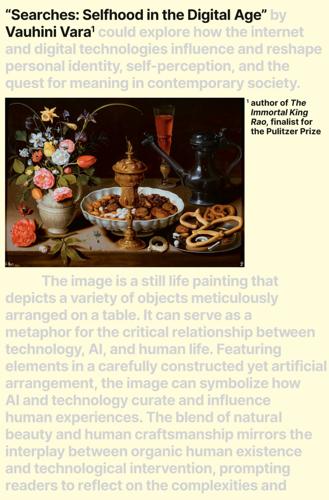
Searches: Selfhood in the Digital Age
by
Vauhini Vara
Published 8 Apr 2025
Jean-François Groff, a programmer who helped get the photo online, later told Vice. “It’s media. You put a pretty girl in the media, people will notice the media. And whatever is around the pretty girl? Sure.” De Gennaro told me the press had sensationalized the sex angle. Still, Groff’s implicit point about the male gaze stands. It’s everywhere, not just online. I’ve seen friends and acquaintances—women among them—pitch their own startups to male investors, deploying a canny attunement to the men’s particular desires. One picture the men like to be shown is of a horizontal line that stretches across the bottom of a slide for a little while before suddenly leaping upward and toward the top right-hand corner, in a steep diagonal line.

New Laws of Robotics: Defending Human Expertise in the Age of AI
by
Frank Pasquale
Published 14 May 2020
At its worst, systemic colonization of the lifeworld encourages a kind of world- and self-instrumentalization that downplays (or entirely eclipses) intrinsic values.86 “You cannot manage what you cannot measure” is a mantra of bland neoliberal managerialism, an assumption that observations that are not comparable and computable are not as valuable as those that are. Like the instrumentalizing “male gaze” critiqued by feminists, a “data gaze” now threatens misrecognition and reification.87 Unmoored from some concrete sense of meaning and purpose, the data gaze undermines not only our own autonomy, but also the integrity of the institutions that give that autonomy meaning. There must be limits on corporate and governmental shaping of human behavior, minds, and souls.

Flowers of Fire: The Inside Story of South Korea's Feminist Movement and What It Means for Women's Rights Worldwide
by
Hawon Jung
Published 21 Mar 2023
“In the past, I used to think that only a super-skinny me with perfect makeup is the ‘real me,’ and anything other than that is not myself,” she said. “Now I am myself, whether I’m less skinny than before or not wearing makeup.” Many who joined the Escape the Corset campaign view it as a rejection of not only rigid beauty ideals but also of the deep-seated tradition that associates women—objects of male gaze and desire—with beauty, whether defined harshly or generously. They therefore argue that the movement differs from the body-positivity movement, which often proclaims that every woman is beautiful in her own way. Instead of “Everyone is beautiful” or “Love who you see in the mirror,” the message of many anti-corset campaigners could be taken as “Why do we have to be beautiful?”
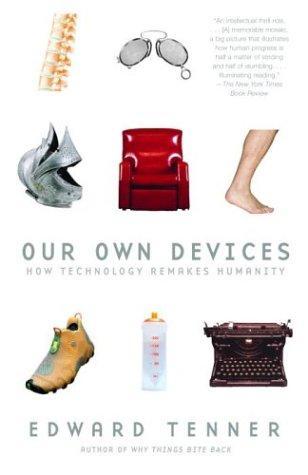
Our Own Devices: How Technology Remakes Humanity
by
Edward Tenner
Published 8 Jun 2004
They loved to associate instruments of wisdom with vanity, and to portray the elderly as more foolish than venerable. Eyeglasses advertised not only the infirmities of age but the snares of self-deception and even of deadly sin. In a 1510 woodcut by Hans Baldung Grien, Lust has a bear’s muzzle, donkey’s ears, horns—and giant spectacles representing what later came to be known as the male gaze. On the opening page of Sebastian Brant’s famous Ship of Fools (1494) appears a woodcut of an eyeglass-wearing, donkey-eared book lover (bibliofool?) in cap and bells, armed with a fly-swatter to protect the precious library, whose contents he is unable to understand. A figure with a moronic expression is dead center on the title-page woodcut of Rabelais’s Gargantua (1534).
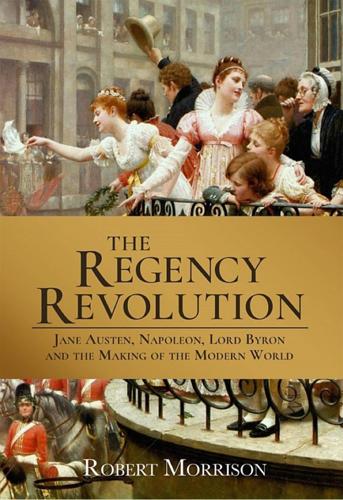
The Regency Revolution: Jane Austen, Napoleon, Lord Byron and the Making of the Modern World
by
Robert Morrison
Published 3 Jul 2019
His young men are handsome officers, farmhands, and squires who engage in intense, if furtive, sexual adventures and who are impressively – even on occasion implausibly – well-endowed. Rowlandson’s women are at the center of these images. Pretty, curvaceous, and enticing, they are the object of the male gaze to be sure, both to the men within the picture and to the men who purchased it. But they are also the creators of their own sexual identities.45 They initiate desire. They defy convention. They glow with the pleasures of sex. Humor informs many of Rowlandson’s finest drawings, as he indicates in the playful double entendres of titles such as “The Man of Feeling,” “The Finishing Stroke,” “The Cunnyseurs,” “The Country Squire New Mounted,” and “The Empress of Russia Receiving her Brave Guards.”

Doppelganger: A Trip Into the Mirror World
by
Naomi Klein
Published 11 Sep 2023
It was as if I hovered over myself watching, even in the most intimate situations, like there was a double of me, always criticizing, correcting my flaws. (“I don’t know how to be myself. It’s like I’m permanently outside myself,” Simon tells his doppelganger in The Double.) Wolf had an explanation for me, one that seemed to make sense of my guardedness. “That is the male gaze,” she said, and I was sure she was right. We lost touch soon after, and I kept only hazy track of her work—the power-feminism manifesto Fire with Fire, the advice to Al Gore on being more alpha. I couldn’t relate to this shoulder-pad person she had become, a woman who seemed to want so much of the wrong kind of power.

Bleeding Edge: A Novel
by
Thomas Pynchon
Published 16 Sep 2013
And pandering to this crowd, way too much Moby for Maxine’s taste, except possibly “That’s When I Reach for My Revolver.” Maxine’s never had what you’d call Big Tits, although the connoisseurs here don’t seem to mind as long as they’re Bare Tits. The one body part they won’t be staring at much is her eyes. This Male Gaze she’s been hearing about since high school is not about to intersect its female counterpart anytime soon. In the course of a dance routine somewhere between vanilla and cherry ripple, including leg hangs, helical descents, upside-down humping of the pole and so forth, Maxine notices this one party out on a remote curve of the bar, drinking you’d say relentlessly what will prove to be Jägermeister and 151, through a Day-Glo straw out of a twenty-ounce convenience-store cup he has brought in with him, and showing no signs of alcohol poisoning, which could mean either unnatural immunity or unreachable despair.
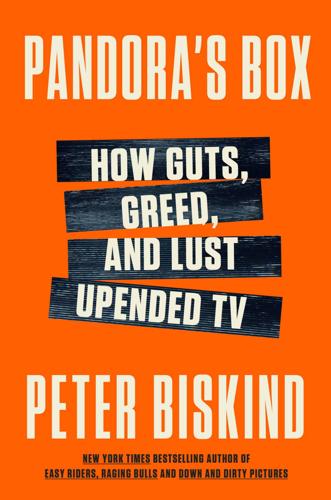
Pandora's Box: How Guts, Guile, and Greed Upended TV
by
Peter Biskind
Published 6 Nov 2023
Episode 2 of that same season is called, “Baptism Runs on Dunkin,” and features an insane imitation of an NBA slam-dunk contest called a “Dunk-a-Thon,” wherein filthy-mouthed deacons compete to baptize the most babies by hurling infants through a basketball hoop. Issa Rae herself followed up Insecure with a razor-sharp Rap Sh!t in 2022, similarly soaked in sex and politics, about two female Black rappers, Shawna and Mia, trying to hustle their way to fame and fortune. Shawna wants to rap about issues like predatory lending and the male gaze, but she’s not getting much engagement. Mia says she’s crazy and wants to rap about “fun bitch stuff,” like money and fast cars, such as, “If he drives a Rolls-Royce, don’t give it up until you see his license and registration!” Bloys’s slate also included I May Destroy You, written, co-directed, and featuring the multihyphenate Michaela Coel, about the unraveling and raveling of a young Black writer after she is raped.

At the Existentialist Café: Freedom, Being, and Apricot Cocktails With Jean-Paul Sartre, Simone De Beauvoir, Albert Camus, Martin Heidegger, Maurice Merleau-Ponty and Others
by
Sarah Bakewell
Published 1 Mar 2016
As she pointed out, woman is indeed ‘other’ for man — but man is not exactly ‘other’ for woman, or not in the same way. Both sexes tend to agree in taking the male as the defining case and the centre of all perspectives. Even language reinforces this, with ‘man’ and ‘he’ being the default terms in French as in English. Women try constantly to picture themselves as they would look to a male gaze. Instead of looking out to the world as it presents itself to them (like the person peering through the keyhole) they maintain a point of view in which they are the objects (like the same person after becoming aware of footsteps in the hall). This, for Beauvoir, is why women spend so much time in front of mirrors.
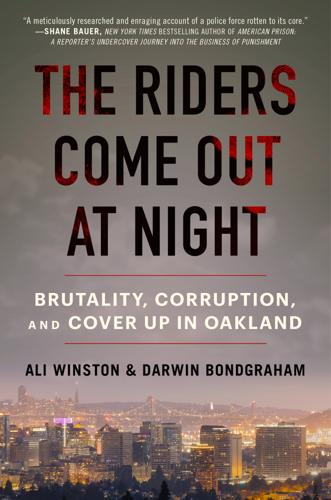
The Riders Come Out at Night: Brutality, Corruption, and Cover-Up in Oakland
by
Ali Winston
and
Darwin Bondgraham
Published 10 Jan 2023
Although highly intelligent—for several years, she was the best student in her English courses—Jasmine often skipped classes and sometimes was disciplined by school administrators and Richmond police officers who worked with the department’s Youth Services Division. She started developing unhealthy relationships with men and using drugs. “I noticed men checking me out at age eight,” she said in a 2021 interview. “And at first, I was embarrassed about it.” She sometimes walked around with her arms crossed on her chest, to hide her body from male gazes. By fifteen, she was being exploited for sex by men on the streets of Richmond and Oakland. However, Brendan O’Brien was not the first man, or even the first police officer, to sexually exploit Jasmine Abuslin. She was twelve years old when the first man propositioned her for sex on the street near her home.
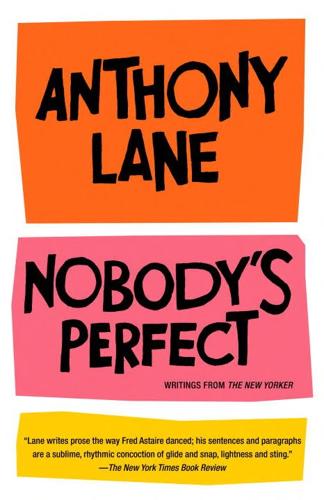
Nobody's Perfect: Writings From the New Yorker
by
Anthony Lane
Published 26 Aug 2002
The good-time girl from San Francisco may be bandaged and traumatized by the end, but she puts up a hell of a fight; Camille Paglia, in her short book on the movie, compliments the character on her “mesmerizing narcissism.” It would be easy to cast Hitchcock as the demon misogynist were it not for the nagging sense that women are the guiding spirits of his movies; resourceful and redoubtable, all smiles in their sexual self-possession, they take the male gaze and stare straight back. Fellini thought that The Birds was a lyric poem, and, as if in tribute to all those cunning gulls, it provides a bizarre sense of uplift; as with any good Hitchcock, from The Lodger onward, material that should leave you humbled and wrecked sends you out on a mystified high.